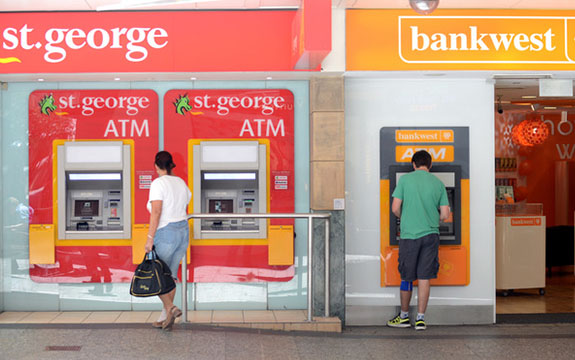How changing our bank account numbering system will be a win for customers

In Summary
Rob Nicholls, Swinburne University of Technology and Charlotte Ann Penel, UNSW Australia
It’s a pain to change mobile providers, but at least keeping your number is easy. It’s much more of a pain to change banks and much of that pain is because we have to change bank account numbers. Why don’t we have bank account number portability in the same way that we have mobile number portability?
The answer is the big four banks would prefer to keep switching accounts difficult. This contrasts with the approach in the United Kingdom.
In March 2015, the UK Financial Conduct Authority (FCA) released a report highlighting the benefits of bank account number portability in encouraging consumers to switch banks. The result is increased competition in the financial system.
The FCA report revealed that 35% of consumers and 40% of businesses “would be much more likely or more likely to switch if they had portable account details”. The research signalled that customers view account number portability as reducing the risk of changing banks. This is because it makes the process quicker and smoother. The reasons are:
customers do not need to change details;
the risk of incoming and outgoing payments going astray diminishes; and
businesses do not need to inform customers of changes.
How could portability be implemented?
For bank account number portability to be effective, the customer’s details and payments need to be accessible by both the old and new bank. The FCA report states that one option is a “central utility model”.
This model could include features such as a “Know Your Customer” database to store customer details for identification and a “payment mandates database”. The idea is for providers to continue offering competing products and services to customers, whilst using a “shared banking platform”. The FCA does not provide specifics of how bank account number portability would be implemented. However, it provides a framework to be further examined.
A report by Jain and Kudidhi provides a more detailed approach of how bank account number portability using a central database could be implemented.
It involves a local database for each institution to initiate switching requests working alongside a central database, accessible by all banks, with all customer account numbers. This approach is similar to that used for mobile number portability which has been working in Australia since September 2001.
Additional factors for bank account number portability to properly function
The Australian payment system is currently based on a series of bilateral networks between financial institutions. These networks facilitate the transactions of direct credits and direct debits.
For this to occur, each customer has an account number to identify the specific account, and a bank, state, branch (BSB) number. To switch banks, customers are required to change their BSB and customer account numbers and redirect incoming or outgoing transactions to the new account details.
The Fraser Report commissioned by the Australian government suggests an alternative numbering system to the existing BSB and account number system to allow account number portability.
A simpler alternative however, could be to merge the current BSB and account number to form a unique customer account number rather than having to develop a completely new one. This parallels the mobile numbering approach where the two digits after “04” previously indicated the network operator and now only do for non-ported numbers.
The FCA report also noted some payment details would have to be separately incorporated into the bank account number portability model such as the International Bank Account Number (IBAN) and continuous payment authorities. However, Australia does not use IBANs and changing banks will not create issues with continuous payment authorities as it also means changing credit card providers.
A centralised database system is also important and is sometimes regarded as a high cost item. However, a process may be established where one of the four big banks will manage the database, which is then checked by the remaining big banking institutions. This would avoid the costs of establishing a new institution. In the telecommunications sector, Telstra runs the equivalent data repository known as the Integrated Public Number Database.
Encouraging greater competition
If, as is the expectation of the Financial System Inquiry, the four pillars policy is to remain then we need mechanisms to improve the vibrancy of competition in the retail banking sector. Account number portability will make switching quicker, easier and more likely. If mobile phone operators can put their competitive offerings on the line, why can’t the banks?
![]()
This article was originally published on The Conversation. Read the original article.

